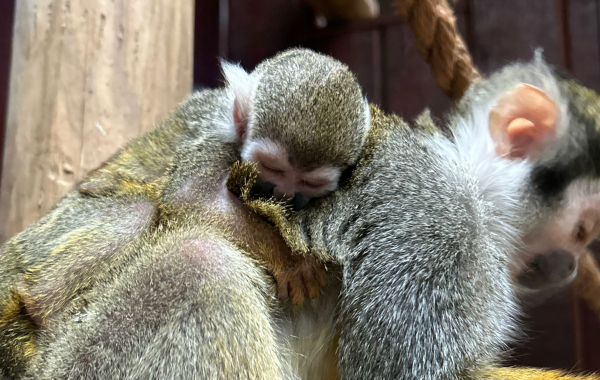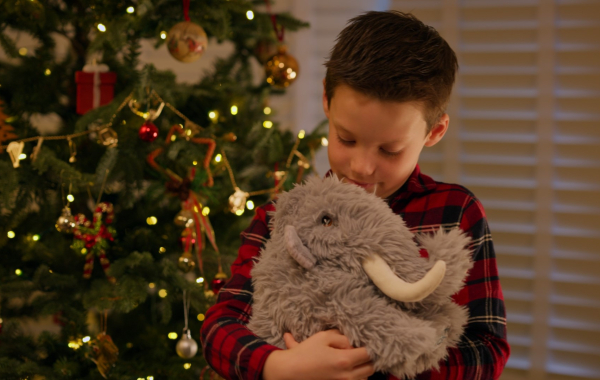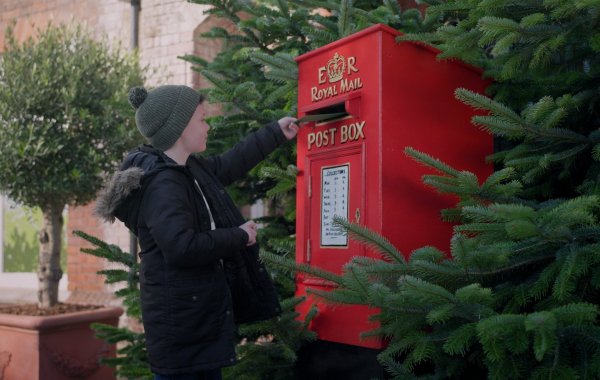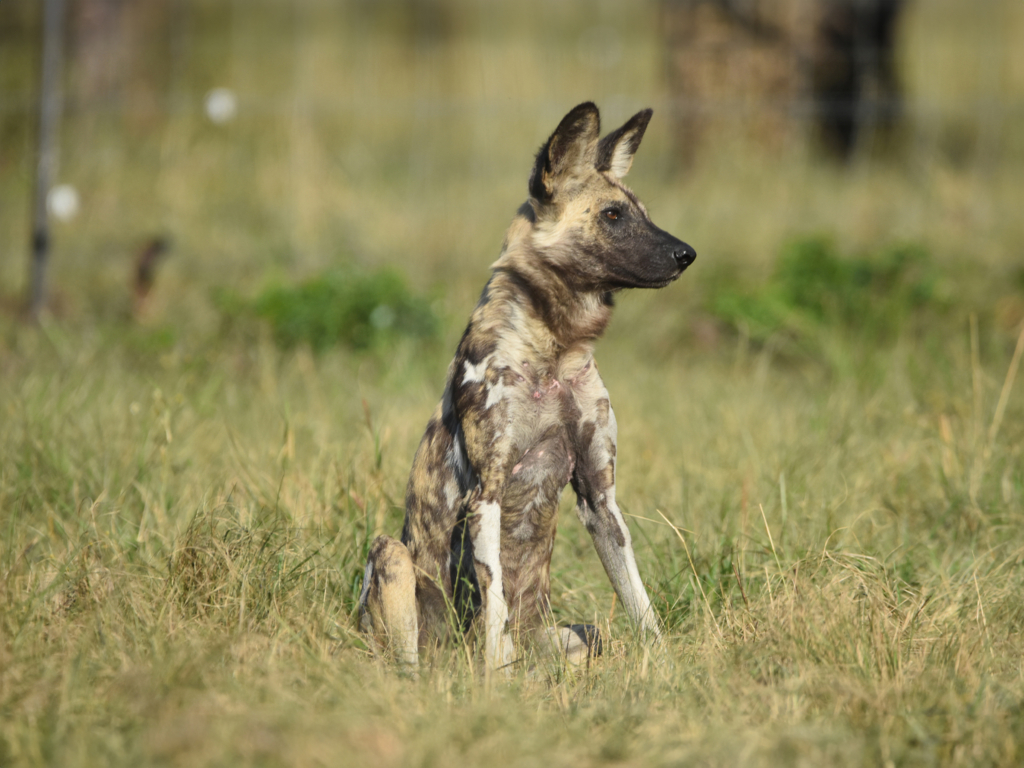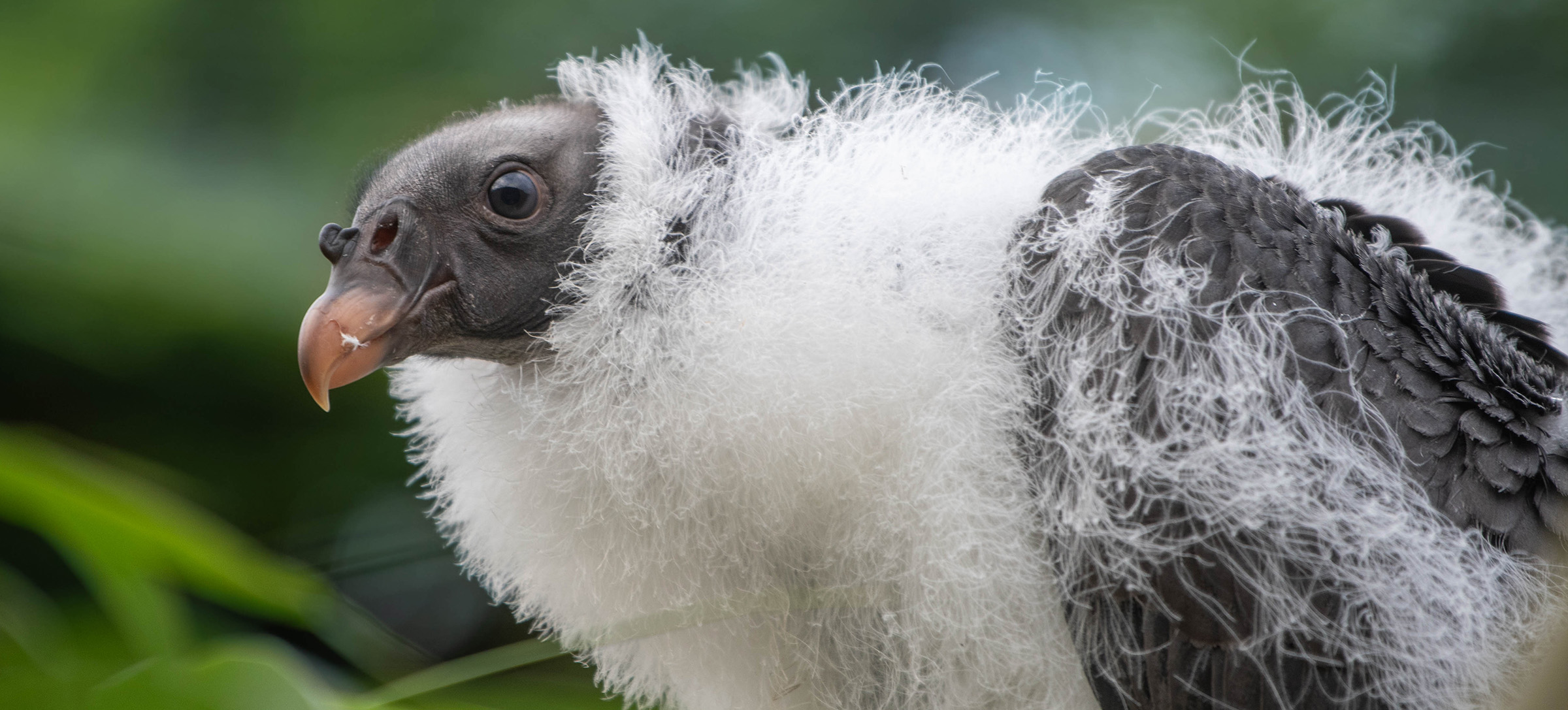
We are delighted to announce that on 15th May 2024, our female king vulture, Midas, hatched a healthy chick!
Midas arrived at Colchester Zoo in 2015 from the International Bird of Prey Centre. King vultures nest on the ground in tree stumps or other natural cavities meaning that their nests consist of very little material, and are usually just scratched out of the existing substrate. Once hatched, the Animal Care Team monitored the egg by weighing it every three days to ensure the embryo’s development was on track.
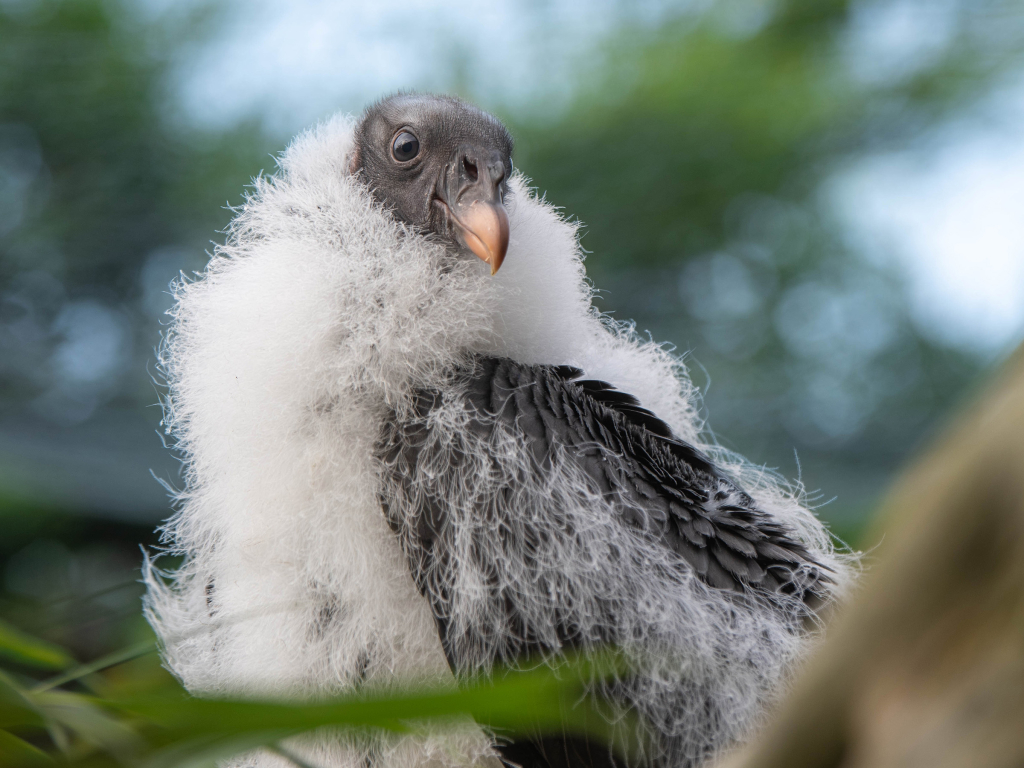
King vultures hatch with semi-open eyes and a white coat of downy feathers. In the first two weeks following the hatching, the chick grows rapidly and looks very similar to a white fluffy cotton ball. Midas has been an incredibly attentive parent over the past few months and the chick has quickly grown into a 3kg fledgling, not that much smaller than Midas!
Juvenile king vultures have dark bills and eyes with a grey neck which turns orange when they reach adulthood. By three years old, the fledgling will begin to look more like the adults, but the youngster will not completely molt into its adult feathers until it reaches five to six years of age.
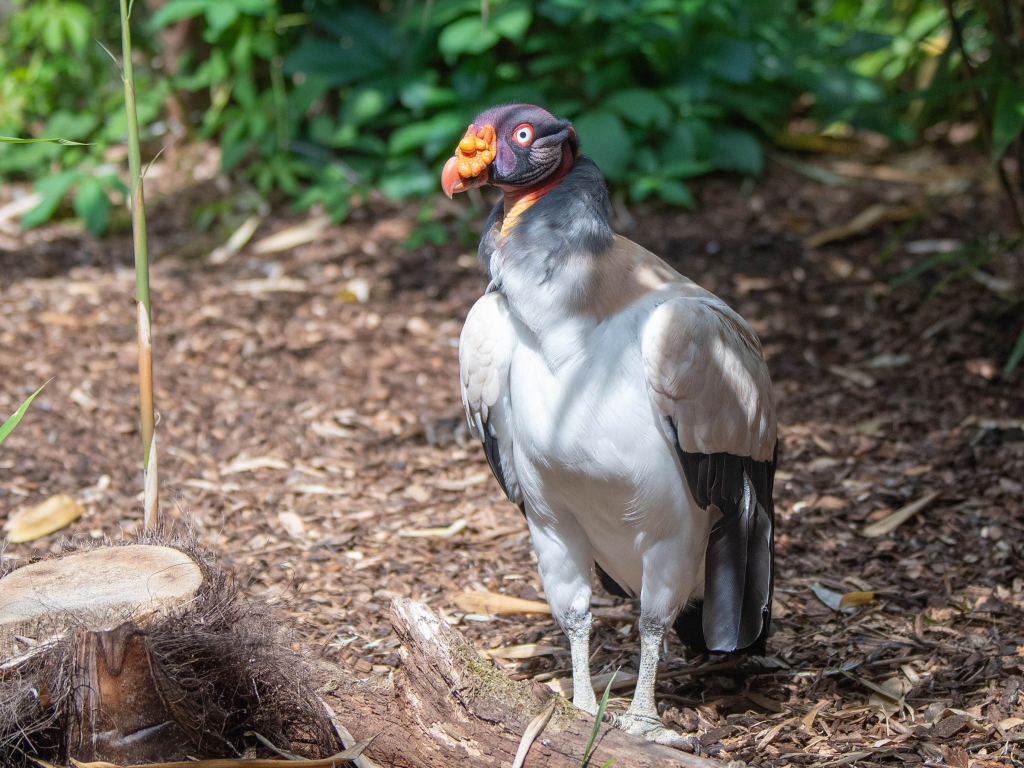
Did you know that king vultures are one of the largest vulture species in South America, after the Andean condor which can also be seen at Colchester Zoo.
King vultures are currently classed as Least Concern on the IUCN Red List of Threatened Species. However, there has been a substantial decrease in wild populations with the main threat being habitat destruction. Therefore, this new arrival is great news for the conservation of this incredible species.
The fledgling is yet to be sexed or named by the Animal Care Team, but we will be sure to keep you updated as soon as we know! Why not see if you can spot our newest arrival at our World of Wings habitat on your next visit.

